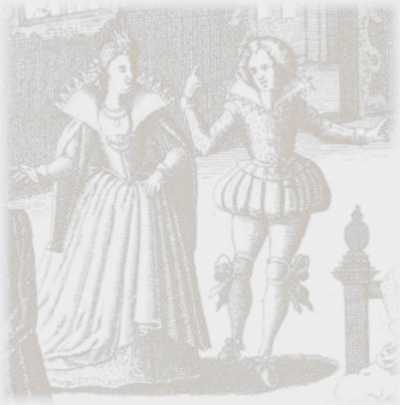This workshop is an initiation to the Spanish baroque dance, as it was practised in the 17th century in Spain. The sources we will use are Discursos sobre Arte del Danzado (Discourses on Art of the Dancing) by Juan de Esquivel Navarro, Seville 1642, and the Libro de danzar (the Book of dancing) by Juan Antonio Jaque, 17th century. This style is the origin of the "Escuela Bolera". There will be a practical, technical and theoretical work.
Technique and style: We will study the basic steps: Floreta, salto y encaje, rompido, carrerilla, campanela, floreo, sacudido, quadropeado, etc … we will work on several possible styles: popular (practiced among the people), and academic (practiced in schools). We will learn a few mudanzas from Folías, and a few mudanzas from Jácaras , the sister of the sarabande, very much related to the current Flamenco Bulerías and Alegrías. A special rythmic work will be done, concretely with castañuelas and zapatedaos.
Theory and inverstigation: There will also be a theoretical work from the sources, to learn how to reconstruct them oneself, with an initiation to the reading keys of the historical sources, considering the historical / social context of the time.
If you have castanets (castañuelas), bring them with you, please.
Spanish version
Este curso es una iniciación a la danza barroca española, como se practicaba en el siglo XVII en España. Las fuentes estudiadas son “Discursos sobre Arte del Danzado” de Juan de Esquivel Navarro, Sevilla 1642, y el “Libro de danzar” de Juan Antonio Jaque, siglo XVII. Este estilo es el origen de la Escuela Bolera. Habrá un trabajo práctico, técnico y teórico.
Técnica y estilo : Se estudiarán los pasos básicos : Floreta, salto y encaje, rompido, carrerilla, campanela, floreo, sacudido, quadropeado, etc… Se trabajará sobre varios estilos posibles : popular (practicado entre el pueblo) o académico (practicado en las escuelas). Se aprendrán unas mudanzas (variaciones) de Folias, y unas mudanzas de Jácara, la hermana de la zarabanda, danza muy relacionada con el flamenco actual, concretamente con las Bulerías y las Alegrías. Se hará un trabajo rítmico especial, concretamente con castañuelas y zapateados.
Teoría e investigación : También habrá un trabajo teórico desde las fuentes, para aprender a descifrarlas uno mismo. Iniciación a las clave de lectura de las fuentes mencionadas. Situación en el contexto histórico/social de la época. El que tenga castañuelas que las traiga por favor.
